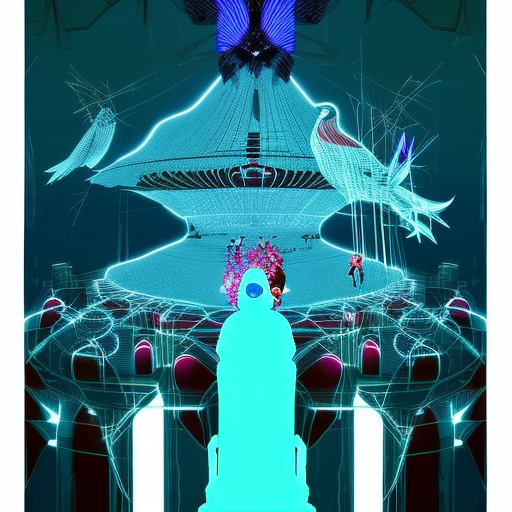One-line Summary:
In Haruki Murakami’s “The Wind-Up Bird Chronicle,” a man’s search for his missing wife leads him on a surreal journey through the depths of his own consciousness and the dark secrets of his country’s past.
The Search for Kumiko:
“The Wind-Up Bird Chronicle” follows the story of Toru Okada, a seemingly ordinary man living in Tokyo who embarks on a quest to find his missing wife, Kumiko. As Toru delves deeper into his search, he encounters a cast of eccentric characters and becomes entangled in a web of strange occurrences that blur the boundaries between reality and fantasy.
Toru’s journey takes him to unexpected places, both physically and mentally. He begins by searching for Kumiko in the neighborhood, putting up flyers and talking to neighbors, but as his search proves fruitless, he starts to explore more unconventional avenues. He visits a mysterious psychic named Malta Kano, who possesses the ability to enter people’s dreams. Through these dreamlike encounters, Toru gains insight into his own subconscious and confronts his deepest fears and desires.
The Dark Secrets of History:
As Toru continues his search, he becomes increasingly entangled in the dark secrets of Japan’s past. He encounters a World War II veteran named Lieutenant Mamiya, who shares his haunting experiences as a soldier in Manchuria. Through Lieutenant Mamiya’s stories, Toru learns about the atrocities committed during the war and the lingering trauma that still affects individuals and society.
Parallel to Toru’s personal journey, Murakami weaves in historical events such as the Nanking Massacre and the Japanese occupation of Manchuria. These historical references serve as a backdrop to the characters’ struggles and highlight the lasting impact of war and violence on individuals and communities.
The Blurring of Reality and Fantasy:
Throughout the novel, Murakami blurs the boundaries between reality and fantasy, creating a dreamlike atmosphere that permeates the narrative. Toru’s encounters with strange and enigmatic characters, such as the enigmatic Noboru Wataya and the mysterious hotel receptionist, Nutmeg, add to the surreal nature of the story.
As Toru delves deeper into his own consciousness, he begins to question the nature of reality and the existence of multiple dimensions. Dreams, visions, and supernatural occurrences intertwine with everyday life, challenging the reader’s perception of what is real and what is imagined.
Key Takeaways:
- The search for a missing loved one can lead to a deeper understanding of oneself.
- The past has a profound impact on the present, and confronting historical traumas is essential for healing.
- Reality is subjective, and the boundaries between the real and the imagined can be blurred.
“But even so, every now and then I would feel a violent stab of loneliness. The very water I drink, the very air I breathe, would feel like long, sharp needles. The pages of a book in my hands would take on the threatening metallic gleam of razor blades. I could hear the roots of loneliness creeping through me when the world was hushed at four o’clock in the morning.”
In “The Wind-Up Bird Chronicle,” Haruki Murakami takes readers on a mesmerizing journey through the depths of human consciousness, the dark secrets of history, and the boundaries between reality and fantasy. Through Toru Okada’s search for his missing wife, the novel explores themes of personal identity, the lasting impact of war, and the nature of reality itself. Murakami’s masterful storytelling and surreal imagery create an immersive reading experience that lingers long after the final page.












